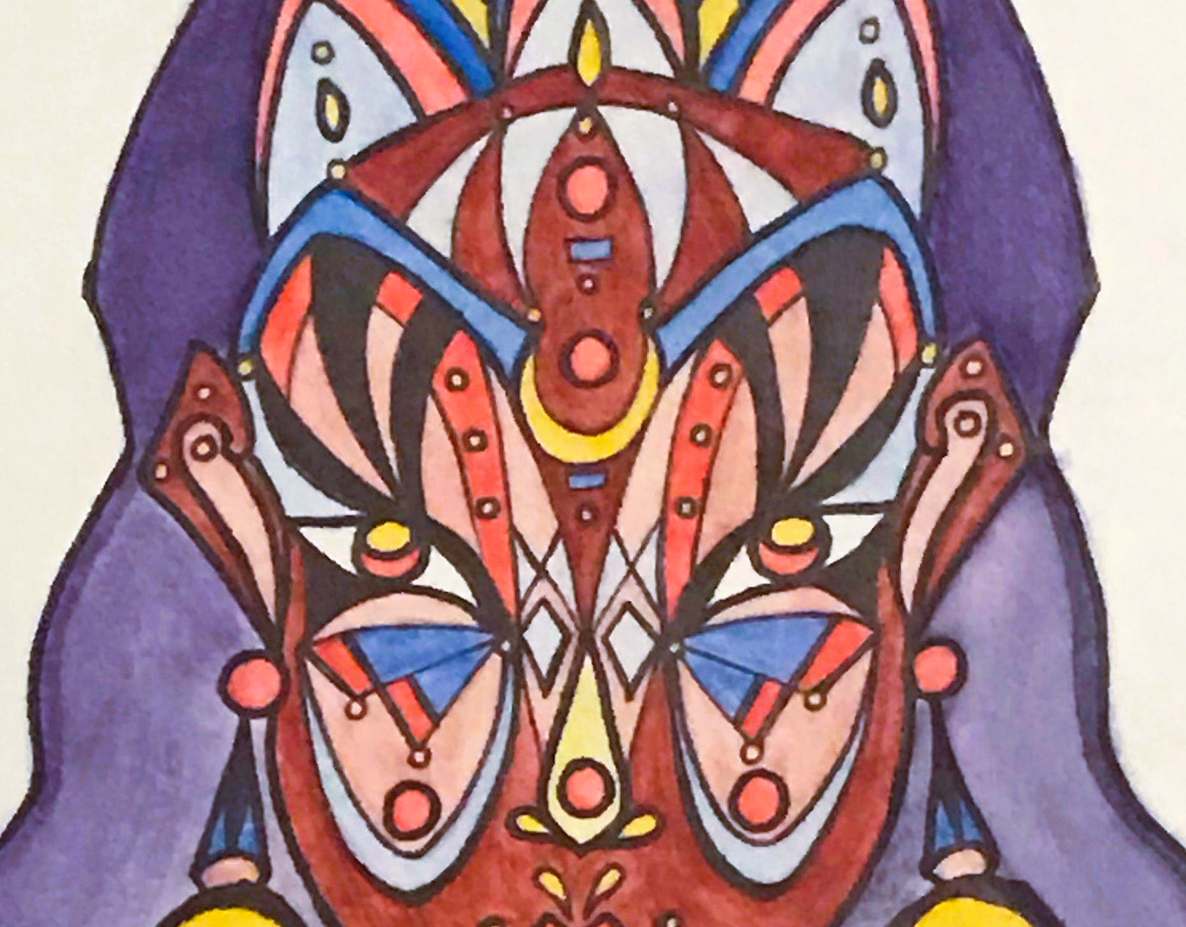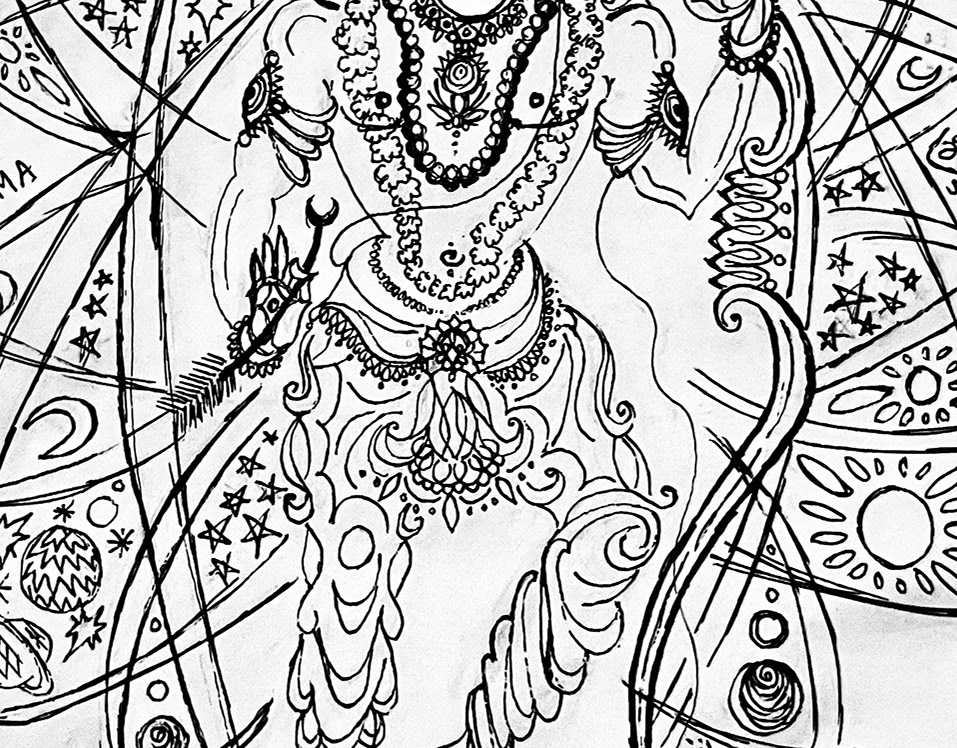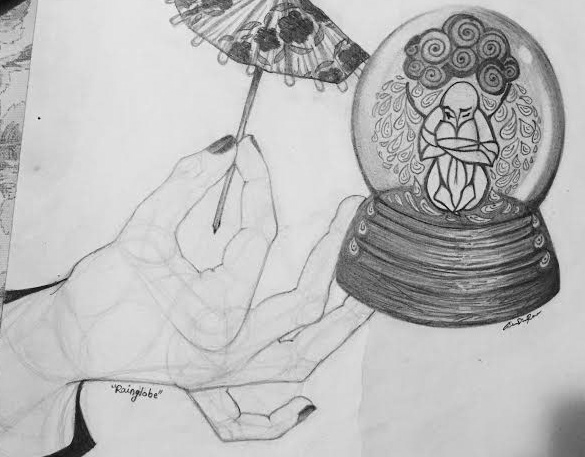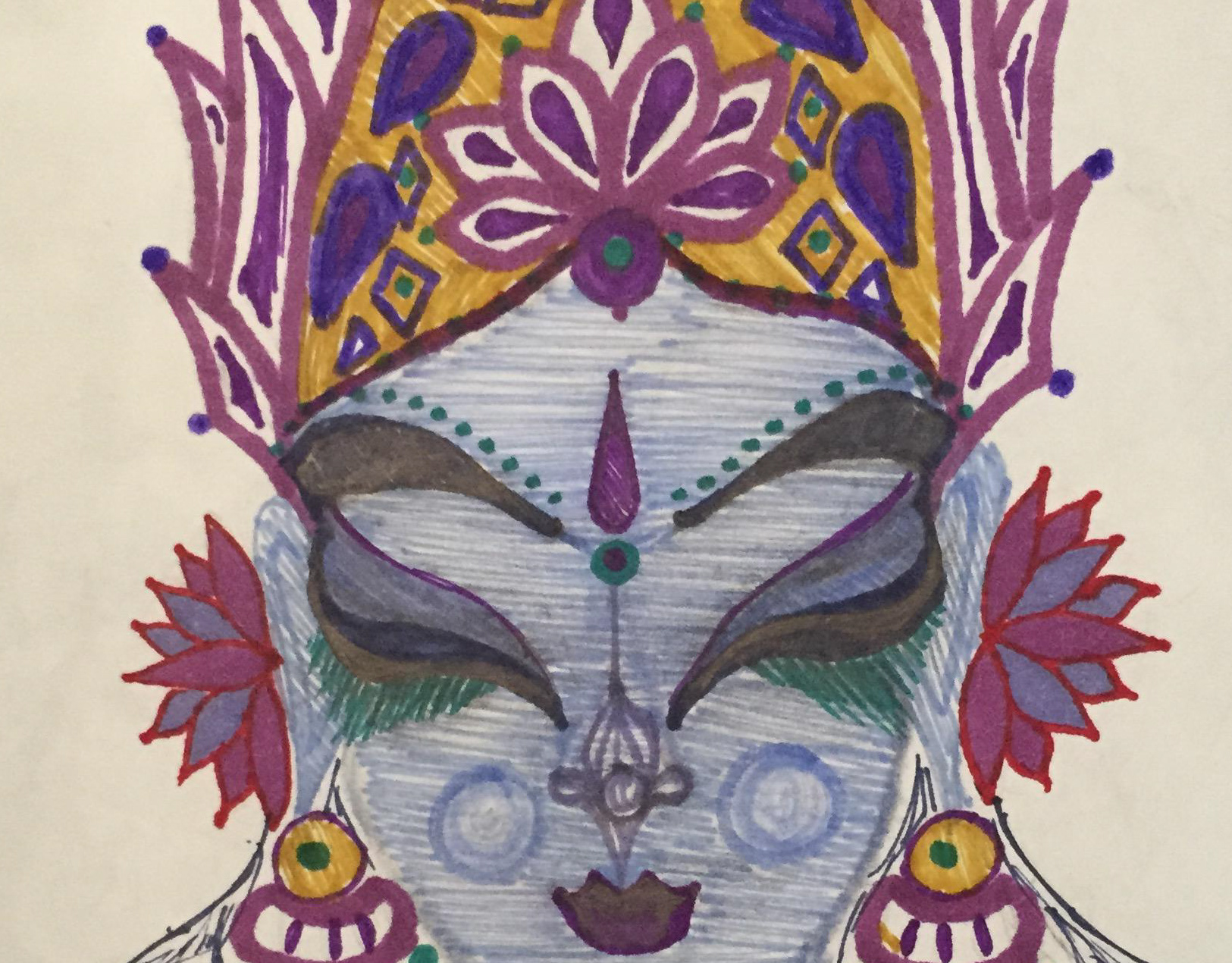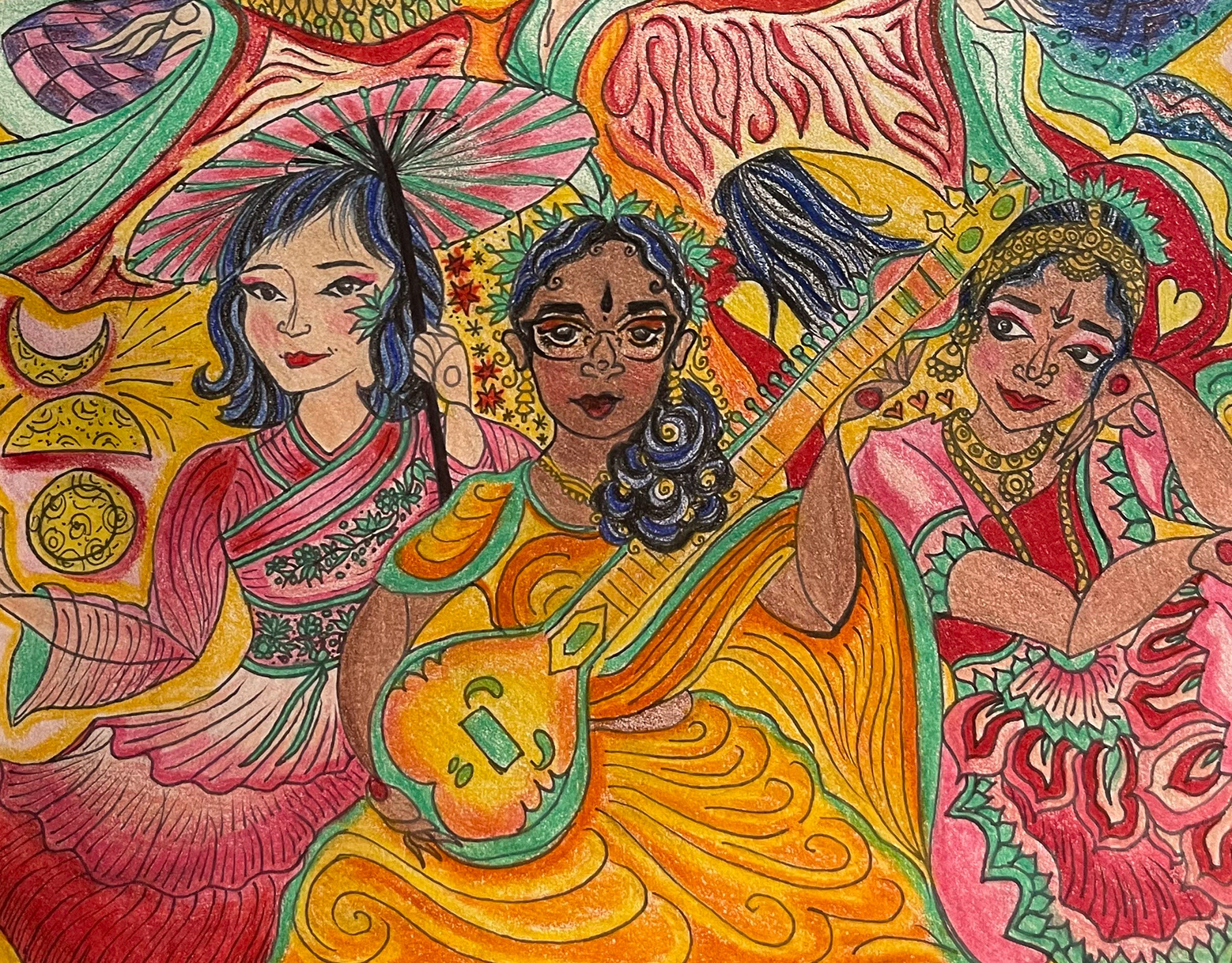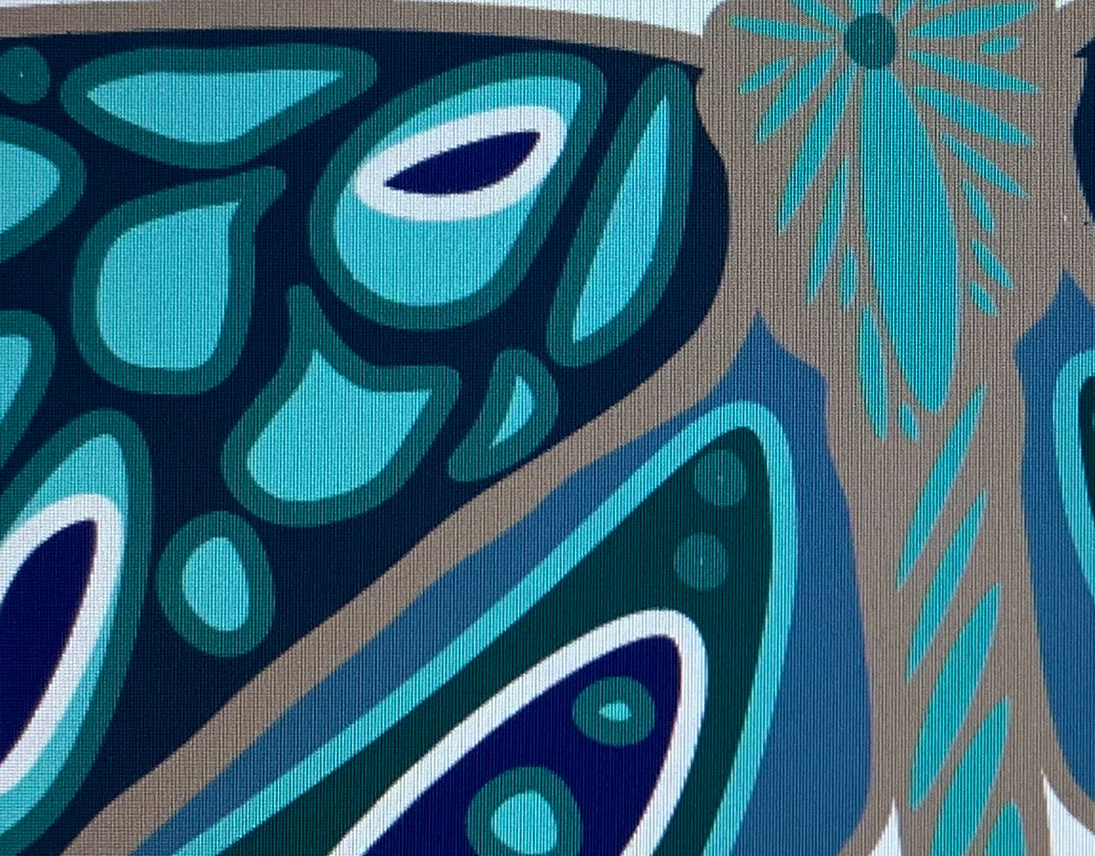"Crescent-Swing, Smoke-Clouds" (2016)
Drawn with ink. This sketch shows a slender hand holding a cigarette, and the illusions inside the smoke cloud. There are two eyes, fanning out like wings, and multiple crescent shapes are present. One crescent holds a ladder which pours down towards a figure, reaching out to climb it. Another crescent holds a swing, while yet another serves as a bed. A crescent ship with a figure on top sits next to an ocean. A crescent swings beneath the ship in the form of an anchor. The last hidden crescents are in the bindi/bottu of the face and in the eyes themselves to mark a line of symmetry. Finally, a face peers from behind at the cloud and the smoker. The style was meant to be surreal, dreamy, yet frazzled. The figures are inspired by Warli folk art from the Indian state of Maharashtra.
More from this Category:

